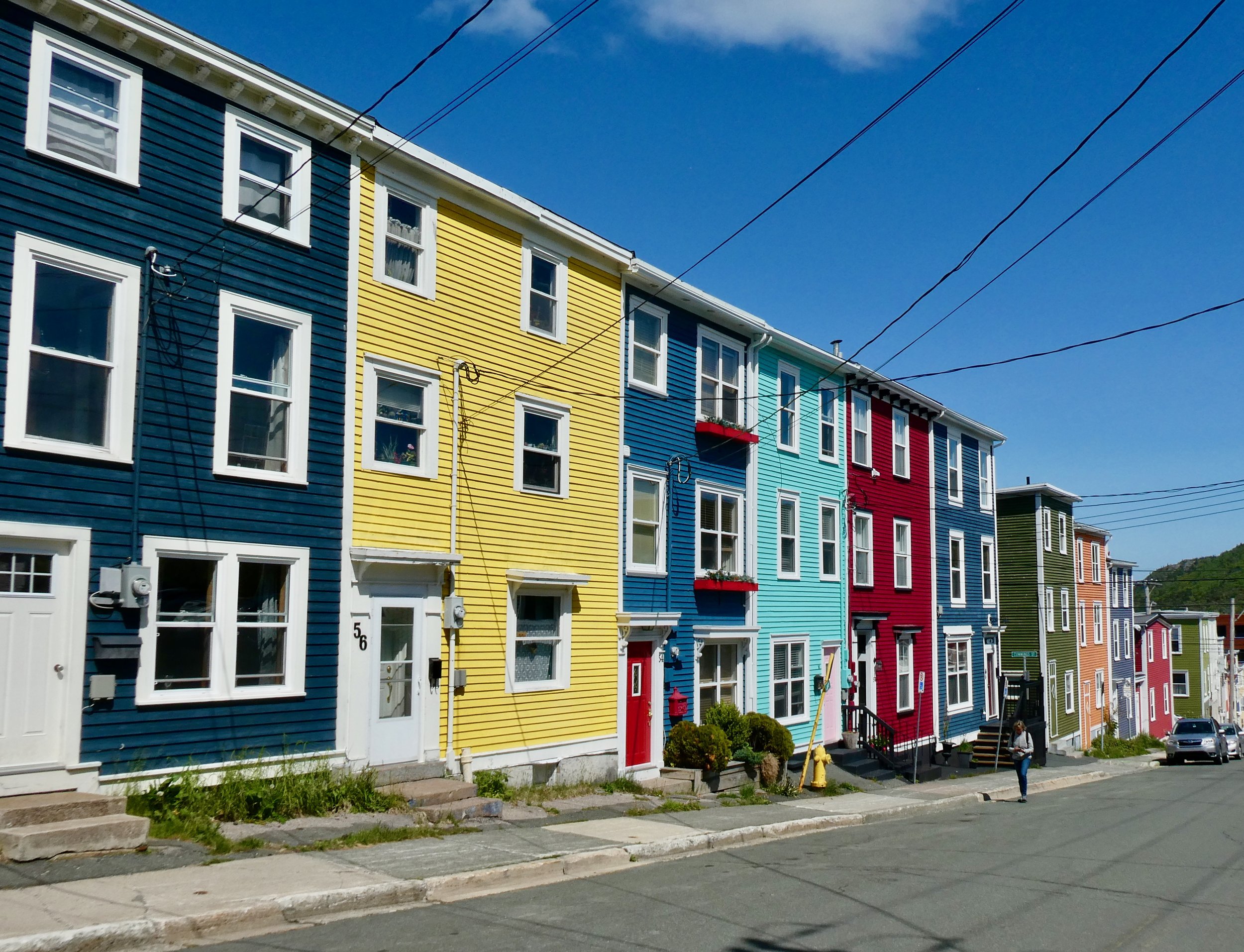St. John’s
is the capital and largest city of Newfoundland and Labrador, and is located on the eastern side of the Avalon Peninsula of southeast Newfoundland. Its landlocked harbour is approached through a long, narrow channel and is protected by the high hills on which the city is built. St. John's, and the province as a whole, was gravely affected in the 1990s by the collapse of the northern cod fishery, which had been the driving force of the provincial economy for hundreds of years. After a decade of high unemployment rates and depopulation, the city's proximity to the Hibernia and White Rose oil fields led to an economic boom that spurred population growth and commercial development. As a result, the St. John's area now accounts for about half of the province's economic output.
Interesting Facts About St. John’s:
St. John’s reports an average of 126 days per year of fog.
George Street in downtown St. John's is two blocks of bars, pubs, restaurants – and nothing else.
There are more pubs per square foot on George Street in St. John’s than anywhere else in Canada.
Guglielmo Marconi received the first transatlantic wireless message on St. John’s Signal Hill on December 12, 1901. The test signal was sent from Cornwall, England 3,200 kilometres away.
St. Johns is the capital and where 40% of the islands population lives.
The most easterly point in North America is Cape Spear which is located just outside St. John’s.
Jelly Bean Row
is named after the colourful houses painted similar to the colour of jelly beans. This neighbourhood is located just north of the centre part of downtown. Even from a distance you can see these colourful two story homes. They are one of St. John’s most iconic images. If you get a chance to stay in one of them via Airbnb, go for it.
Signal Hill
is truly one of the most important landmarks of St. John’s. From the top you see far out into the Atlantic Ocean and just below the narrow entrance to St. John’s harbour. This is a very strategic location and can provide protection for the harbour and all the inhabitants. Fortifications were built in the 17th Century and added to as time went on. Of special importance was the role Newfoundland and in particular St. John’s played as a staging base for Canadian and American troops & supplies headed to Europe to participate in World War l and World War lI.
Cape Spear
is another landmark that is a must for visitors to St. John’s. Newfoundlands oldest active light house will be found there. As you face the Atlantic Ocean, the whole of North America lies behind you. Also, you will probably find the ever present coastal fog moving in and out - sometimes totally obscuring your view. If you’re lucky you might see an iceberg floating in the distance.
The Screeched In Ceremony
is the only way to become an Honorary Newfoundlander. Every Newfoundlander knows what a Screech In Ceremony is all about. It is the only way that those not lucky enough to be born a Newfoundlander can become as close as possible to being a Newfoundlander. Those who survive the ceremony will be forever known as an Honorary Newfoundlanders.
Sounds a bit scary, but a lot of fun. Usually done in a bar with patrons cheering you on - the semi embarrassing event only takes about 1/2 hour. We were Screeched In by Brian Day at Christian’s Bar on George St. This is one of the most famous bars for getting Screeched In. Probably one of the most famous people Screeched In by Brian Day was Anthony Bourdain of the CNN travel series - Parts Unknown.
You will have to recite the following phrase to achieve your status as a Honorary Newfoundlander.
You will be asked:
"Is ye an honorary Newfoundlander?" with the proper answer "'Deed I is me ol' cock, and long may your big jib draw" and then you kiss a cod. In our case it was a frozen one. We got Screeched In with about 15 other people - all the while the rest of the bar laughed and cheered us on. The final step was a shot of Newfoundland Screech, a liquor with a Jamaican history to it. Turns out, many years ago Newfoundland merchants would swap their dried salted cod fish for Jamaican rum. The rum became so popular, they decided to make their own and called it Screech.
Although I didn’t get any photos of myself during the ceremony, the certificate above shows my successful completion and now status as an Honorary Newfoundlander.
This photo reminded me of my time in Newfoundland. You could be sitting peacefully out on a deck enjoying the sun and coastal view and in a moment - wind, rain, and coastal fog enveloped you. This is how quickly the weather changes.
The one thing that never changes is the kindness and compassion of the people of Newfoundland. What a proud and hard working people they are. They came from Ireland to live in remote coastal communities with few amenities. Poor roads, no hospitals and hardly any basic services - this is how they founded and made their life in Newfoundland - Labrador. You come to see and enjoy a beautiful part of the world and you find something more beautiful than that - the people. I’m proud to be an Honorary Newfoundlander.
























